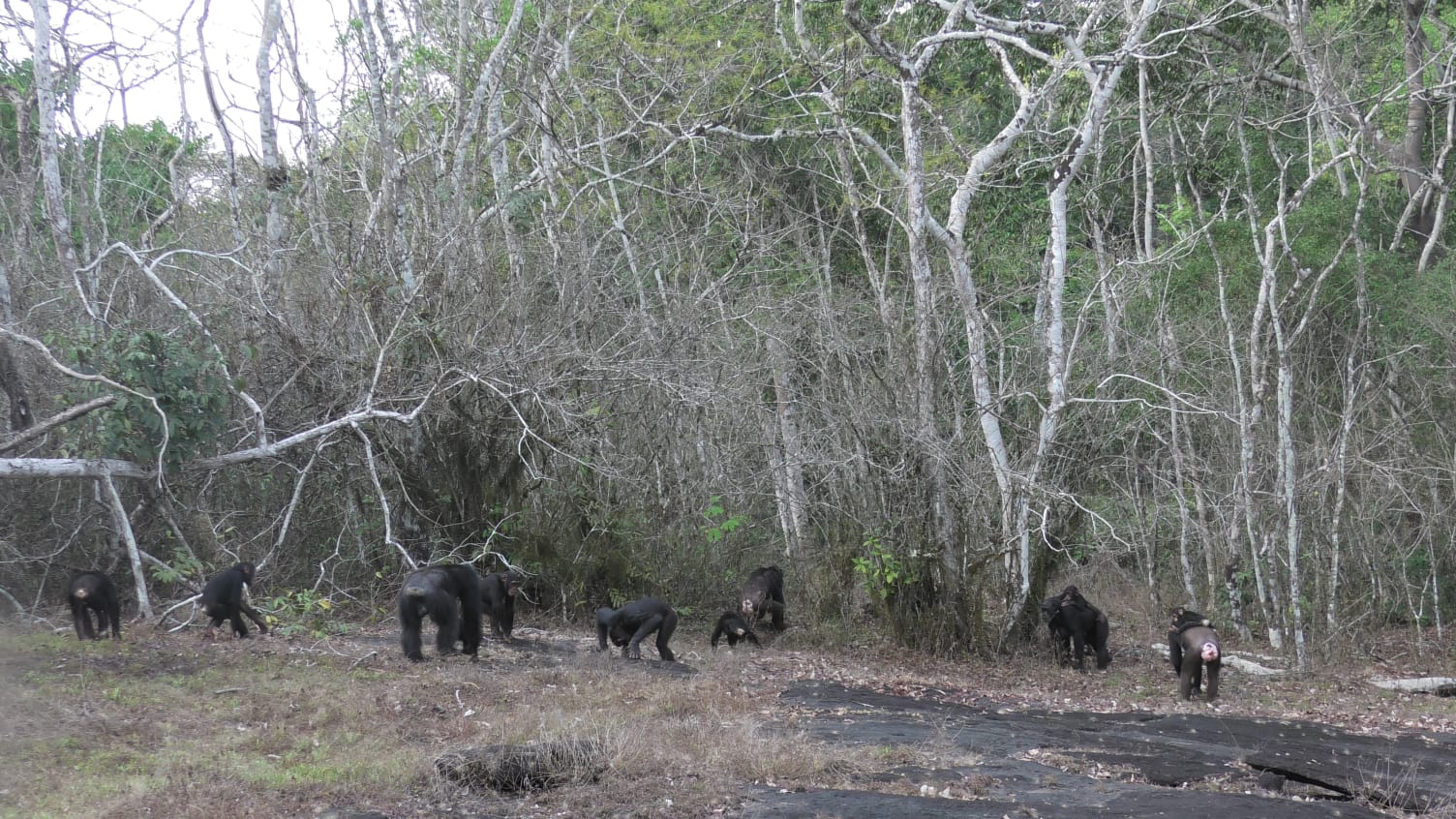- Joined
- Jul 19, 2004
- Messages
- 29,622
- Location
- Out of Bounds
Chimps yell at a certain sort of tree, chuck a chunk (of rock) at it, then walk away ...
Communication? Play? Hoaxing the baffled primatologists? You decide!
Communication? Play? Hoaxing the baffled primatologists? You decide!
FULL STORY: https://www.sciencealert.com/chimps...certain-types-of-tree-and-we-have-no-idea-whyChimps Have Been Caught Throwing Rocks at Trees And Yelling For No Apparent Reason
Chimpanzees in West Africa have a song, and it goes like this - hoot loudly, and then throw a rock at a tree. Maybe twice. And then saunter away.
Whatever it is our primate cousins are trying to do, we honestly have no idea. But a close look at their choice of instruments just might provide some clues, as the chimps have been observed throwing the rocks at certain types of trees.
Primatologists from the Max Planck Institute for Evolutionary Anthropology in Germany, who first observed this behaviour a few years ago, have now tossed some rocks of their own to determine whether rock-hurling would work as a type of communication. ...
In 2016, the Max Planck primatologists recorded chimpanzees from four wild populations in West Africa hooting excitedly and then throwing a single rock at the wide base of a large tree before running off.
Exactly why they did this wasn't at all clear. There's a sense of something cultural, even ritualistic about the practice. Stones had piled up at the bases of the regularly used tree-drums, suggesting there is something special about those particular instruments.
One possibility is that the clunk-crash noise of the collision communicates a message over long distances, similar to how Australian palm cockatoos might use sticks to bash out a beat in search of a mate.
The researchers were also struck by the fact that the chimps that practiced 'accumulative stone throwing' (AST) didn't throw them at any old type of tree; they returned to the same species time and again. ...
In support of their communication hypothesis, the results showed the AST trees hummed with deeper frequencies that could echo over relatively longer distances. Most also had big buttresses that would help boom out a sound.
The timber also produced a longer 'attack time', which also contributed to more drawn-out noise.
The fact the trees all tended to have these features in common indicates the chimps were indeed picking them for their sound quality, which could contribute to a form of non-visual messaging. ...


